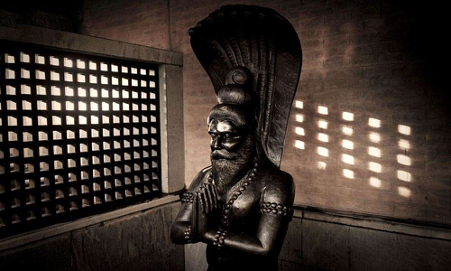
Many people wonder why Hinduism has so many sacred books? And which really is the main book of Hinduism?
There seems to be a lot of confusion around Hindu scriptures and below is a humble attempt to throw some light on some of the primary Hindu scriptures.
1/n
There seems to be a lot of confusion around Hindu scriptures and below is a humble attempt to throw some light on some of the primary Hindu scriptures.
1/n

Santan is a pluralistic religion & allows people to express fondness for God in their own way.
Thus, there is huge literature available on Hinduism, encompassing thousands of books.
However, the primary & authoritative text of Hinduism is only The Vedas, the ‘Shruti’.
2/n
Thus, there is huge literature available on Hinduism, encompassing thousands of books.
However, the primary & authoritative text of Hinduism is only The Vedas, the ‘Shruti’.
2/n
All other literature is considered ‘Smriti’ and consists of commentary, explanation, deeper philosophy on the teachings of the Vedas.
Now the question is what is 'Shruti' and what is 'Smriti'?
3/n
Now the question is what is 'Shruti' and what is 'Smriti'?
3/n
Shruti literally means in Sanskrit “What Is Heard”. Shruti is the knowledge directly from God & was heard by the sages directly through divine universal vibrations
It is the revelation, unquestionable truth, eternal. It is the first level of knowledge transition from divine
4/n
It is the revelation, unquestionable truth, eternal. It is the first level of knowledge transition from divine
4/n
Smriti ion the other hand is “that which has been remembered” supplementary and may change over time.
It is authoritative only to the extent that it conforms to the bedrock of Shruti.
5/n
It is authoritative only to the extent that it conforms to the bedrock of Shruti.
5/n
Apart from The Vedas, the core of the Hindu religion is Vedic literature which primarily includes texts:
1. Samhitas – literally “collections,” in this case of hymns and mantras. They form the Veda.
2. Brahmanas – manuals of ritual & prayer for the guiding priests...
6/n
1. Samhitas – literally “collections,” in this case of hymns and mantras. They form the Veda.
2. Brahmanas – manuals of ritual & prayer for the guiding priests...
6/n
...They (Brahmanas) explain the Samhitas. They also contain early versions of some stories.
3. Aranyakas – literally “forest books” for hermits and saints. They are philosophical treatises.
4. Upanishads – books of philosophy, also called “Vedanta,” the end of Vedas..
7/n
3. Aranyakas – literally “forest books” for hermits and saints. They are philosophical treatises.
4. Upanishads – books of philosophy, also called “Vedanta,” the end of Vedas..
7/n
.. Upnashidas are the Vedic teachings passed on by Gurus to their Shishyas
5. Vedangas, which expound the sciences required to understand and apply the Vedas.
6. Upavedas that deal with the four traditional arts and sciences.
8/n
5. Vedangas, which expound the sciences required to understand and apply the Vedas.
6. Upavedas that deal with the four traditional arts and sciences.
8/n
There is often confusion between different books and scriptures but if we do a little research we get all the answers.
There are many sacred (authentic only) books but the core philosophy revolves around the divine Vedas 🙏
I offer a humble apology if I missed anything 🙏
n/n
There are many sacred (authentic only) books but the core philosophy revolves around the divine Vedas 🙏
I offer a humble apology if I missed anything 🙏
n/n
• • •
Missing some Tweet in this thread? You can try to
force a refresh








